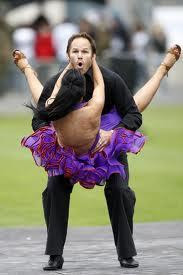The study, led by psychologist Dr Nick Neave and researcher Kristofor McCarty, has for the first time identified potential biomechanical differences between "good" and "bad" male dancers. Its findings are published in the Royal Society Journal Biology Letters on Wednesday 8th September.
Dr Neave believes that such dance movements may form honest signals of a man's reproductive quality, in terms of health, vigour or strength, and will carry out further research to fully grasp the implications.
Researchers, at Northumbria's School of Life Sciences, filmed 19 male volunteers, aged 18-35, with a 3-D camera system as they danced to a basic rhythm. Their real-life movements were mapped onto feature-less, white, gender-neutral humanoid characters, or avatars, so that 35 heterosexual women could rate their dance moves without being prejudiced by each male's individual level of physical attractiveness.
The results showed that eight movement variables made the difference between a "good" and a "bad" dancer. These were the size of movement of the neck, trunk, left shoulder and wrist, the variability of movement size of the neck, trunk and left wrist, and the speed of movement of the right knee.
Female perceptions of good dance quality were influenced most greatly by large and varied movements involving the neck and trunk.
Dr Neave said: "This is the first study to show objectively what differentiates a good dancer from a bad one. Men all over the world will be interested to know what moves they can throw to attract women.
"We now know which area of the body females are looking at when they are making a judgement about male dance attractiveness. If a man knows what the key moves are, he can get some training and improve his chances of attracting a female through his dance style."
Kristofor McCarty said: "The methods we have used here have allowed us to make some preliminary predictions as to why dance has evolved. Our results clearly show that there seems to be a strong general consensus as to what is seen as a good and bad dance, and that women appear to like and look for the same sort of moves.
"From this, we predict that those observations have underlying traits associated with them but further research must be conducted to support such claims."
Dr Neave and Kristofor McCarty also worked with fellow Northumbria researchers Dr Nick Caplan and Dr Johannes Hönekopp, and Jeanette Freynik and Dr Bernhard Fink, from the University of Goettingen, on the landmark study.

0 comments:
Post a Comment